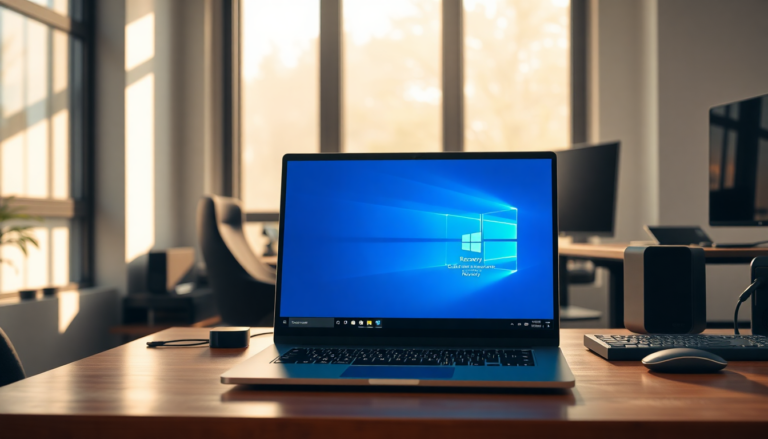Argomenti trattati
In today’s tech landscape, few things are as frustrating as a Windows PC that suddenly crashes or refuses to boot up. If you’ve ever found yourself staring at a blank screen or the dreaded Blue Screen of Death, you know the sinking feeling that comes with it. Thankfully, Microsoft is stepping in to help with an exciting feature called ‘quick machine recovery.’ Currently being tested in enterprise environments, it’s set to make its way to consumers soon, and it promises to enhance system stability while simplifying troubleshooting when things go wrong.
What You Need to Know About Quick Machine Recovery
Quick machine recovery is part of the latest Windows 11 Build 26100.4762, which is currently available in the Release Preview Channel—the closest channel to standard Windows updates. Although this feature has been around in some form since March, it’s now specifically geared towards consumer PCs, making it a significant leap forward in user support. The core idea behind quick machine recovery is to automatically troubleshoot problems, potentially saving you both time and stress when your system encounters issues.
So, how does it work? When your Windows PC hits a critical snag, like a BSOD, it traditionally enters the Windows Recovery Environment (Windows RE). Here, you’re usually presented with a bunch of options to fix the problem—like uninstalling updates or changing startup settings. But quick machine recovery elevates this experience by automatically diagnosing the issue without you lifting a finger. If your device can connect to the internet, it sends recovery information straight to Microsoft, streamlining the resolution process.
The Mechanism Behind Quick Machine Recovery
Once activated, the quick machine recovery feature kicks into gear through a sophisticated process designed to identify and fix system issues. Upon entering recovery mode, your device connects to Microsoft’s servers to share crash data and other relevant details. This data exchange allows Microsoft to analyze the problems and spot trends in user experiences. Based on these insights, they can push a patch or fix through Windows Update, making the recovery process much smoother.
Microsoft employs two main methods for this feature: cloud remediation and auto remediation. Cloud remediation means your device actively seeks updates from Microsoft’s servers, while auto remediation lets the PC periodically check for solutions on its own. However, it’s worth noting that auto remediation is disabled by default on home PCs, which could slow down the troubleshooting process since the system won’t look for fixes until you tell it to.
From Startup Repair to Quick Machine Recovery
Interestingly, Microsoft’s existing tool, Startup Repair, is set to work alongside the new quick machine recovery feature. If your PC can’t connect to the internet, Startup Repair will still be there as a backup option. But the good news is that you can turn off quick machine recovery if you prefer to stick with Startup Repair as your go-to method for addressing system failures.
As this feature gradually rolls out, keep in mind that even if you have the latest build installed, the full capabilities of quick machine recovery may not be immediately available. However, as Microsoft continues to roll out updates, this feature emerges as a valuable addition, aiming to simplify your experience when your system faces critical failures.
Exciting Additions and What They Mean for the Future
In addition to quick machine recovery, this Windows build comes packed with other enhancements designed to boost your interaction with the operating system. One standout feature is ‘semantic search,’ which allows you to describe issues in a more conversational way, leading the system to provide relevant solutions. This kind of innovation reflects a broader trend of making technology more accessible and user-friendly.
As Microsoft forges ahead with these advancements, the implications of quick machine recovery extend well beyond immediate troubleshooting. It’s a testament to their commitment to improving user experiences by minimizing downtime and providing solid support during critical failures. As technology evolves, you can expect features like this to shape the future of Windows, emphasizing automated solutions to common challenges we all face.

